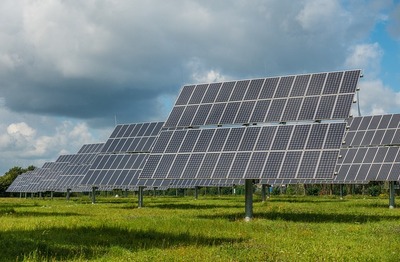New Online Tool for Wisconsin's Energy Sources
Wednesday, July 19th, 2023 -- 8:00 AM

(By Joe Schulz, Wisconsin Public Radio) Ever wonder how much of Wisconsin’s energy comes from renewables and how that’s changed over time?
According to Joe Schulz, the state’s utility regulator has a new online tool that makes it easier to find out. The "Wisconsin Energy Statistics" portal provides a snapshot of energy use in Wisconsin, as well as that energy’s economic and environmental impacts.
The Public Service Commission of Wisconsin has published energy data in a physical book since 1976. In a statement, PSC Chair Rebecca Cameron Valcq said the new online resource aims to make that information more accessible.
Joe Fontaine is administrator of the agency's Division of Digital Access, Consumer, and Environmental Affairs. He said the commission used to post the book’s pages on its website, but the new online portal streamlines the user experience.
The new webpage also makes it easier for regulators to provide more up-to-date information on a regular basis, allowing users to track Wisconsin’s clean energy transition in real time, Fontaine said. The portal has data through 2021, and illustrates long-term trends by providing an insight into Wisconsin’s energy sources and how they’ve changed over time.
The state’s annual solar generation has grown from 1.41 megawatt hours in 2015 to 830.54 megawatt hours in 2021. That’s enough to power around 150,000 homes. Over the same period, coal-powered electricity has decreased by nearly 38 percent.
However, PSC data shows that coal was still the biggest source of electricity in Wisconsin as of 2021, accounting for 42 percent of the state’s electricity generation. It was followed by natural gas at 33 percent, nuclear at 15 percent, hydro at 3 percent and wind at 2.4 percent.
Other electricity sources include petroleum, wood and wood derived fuels, biomass and solar. Fontaine said coal represented more than 60 percent of electricity generation a decade ago. Because the online portal’s most recent data comes from 2021, he said it doesn’t take into account renewable energy projects that came online in 2022 and 2023.
If utilities maintain plans to retire coal plants, Fontaine said coal would decline to 21 percent of generation by 2028. By that point, he said coal will be outpaced by natural gas and offset by increases in wind and solar energy.
The tool also provides data on energy sector jobs in Wisconsin, which account for 4 percent of total employment in the state. The biggest share of those jobs are in energy efficiency, with 56,241.
Feel free to contact us with questions and/or comments.




